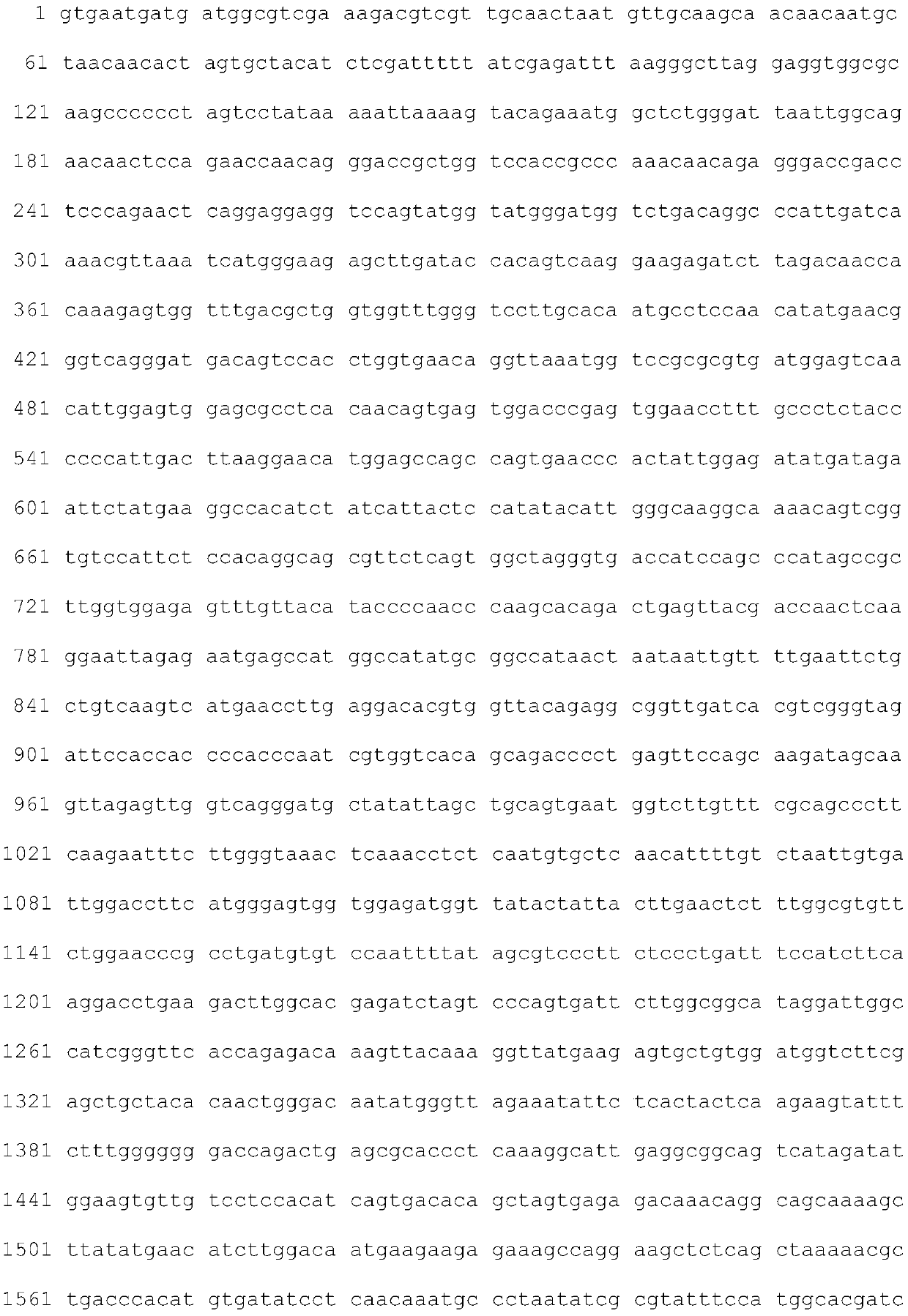Methods for detecting norovirus
A detection method and virus gene technology, applied in the direction of viruses, viral peptides, antiviral agents, etc., can solve problems such as the difficulty in developing broad-spectrum protective human norovirus vaccines
- Summary
- Abstract
- Description
- Claims
- Application Information
AI Technical Summary
Problems solved by technology
Method used
Image
Examples
Embodiment 1
[0158] Example 1: Using SIMPLEXA TM Direct real-time RT-PCR detection of norovirus genogroups
[0159] Real-time RT-PCR amplification and detection: Raw formed and unformed stool samples were suspended in sample buffer. For each reaction on a direct amplification plate (Focus Diagnostics, Inc., Cypress, California, USA), 50 μL or mg of each untreated stool sample was suspended in 2 mL of sample buffer (or similar ratio, That is, 25 μL or mg in 1 mL of sample buffer). Subsequently, 50 μL of each stool-sample buffer mixture was loaded into the sample port without a separate front-end sample preparation step. Load 50 µL of norovirus direct reaction mix consisting of the following: PCR buffer, DNA polymerase, reverse transcriptase, RNase inhibitor, BSA, dNTPs, magnesium chloride, potassium chloride into the reaction port , primers consisting of SEQ ID NO: 5, 6, 9 and 10 (each primer has a concentration of 750 nM), probes consisting of SEQ ID NO: 7, 8 and 11 (each probe has a ...
Embodiment 2
[0172] Example 2: Norovirus SIMPLEXA TM Comparison of direct real-time RT-PCR results with conventional real-time RT-PCR
[0173] Use Simplexa TM Norovirus direct assay evaluated norovirus in 144 de-identified clinical stool samples (47 GI positive, 43 GII positive and 54 norovirus negative from FocusDiagnostics: Reference Laboratory) previously tested using routine real-time RT-PCR. Such as virus. Simplexa TM The results of the norovirus direct assay were compared with the previous real-time RT-PCR results to determine the positive and negative coincidence rates. Conventional real-time RT-PCR employs a separate nucleic acid extraction step prior to the amplification step of real-time RT-PCR.
[0174] Table 3: Norovirus GI Concordance of Stool Samples
[0175]
[0176] a 5 samples were previously tested using conventional real-time RT-PCR and subsequently using Simplexa TM Norovirus direct assay to test. Using the CDC Norovirus Taqman assay in combination with Ro...
Embodiment 3
[0180] Example 3: Effects of Endogenous and Exogenous Interferants on the Sensitivity of Norovirus Multiplex Assays
[0181] Evaluation of the impact of potential endogenous and exogenous interfering substances on the sensitivity of a norovirus multiplex assay.
[0182] The interference group was artificially designed as GI.1 or GII.4 with 3 times the LoD concentration. Spike each substance into norovirus GI.1 or GII.4 artificial samples and use Simplexa TM Norovirus direct assay test. The concentrations of each interferent are listed in Tables 5-6. The set was created using pooled formed negative fecal matrices or pooled unformed negative fecal matrices.
[0183] Table 5: Exogenous Interferants Tested in Human Fecal Matrix
[0184]
[0185]
[0186] Table 6: Endogenous Interferants Tested in Human Fecal Matrix
[0187]
[0188] Results. No interference was detected in both formed and unformed fecal matrices with any of the exogenous interferents tested (listed...
PUM
 Login to View More
Login to View More Abstract
Description
Claims
Application Information
 Login to View More
Login to View More - R&D
- Intellectual Property
- Life Sciences
- Materials
- Tech Scout
- Unparalleled Data Quality
- Higher Quality Content
- 60% Fewer Hallucinations
Browse by: Latest US Patents, China's latest patents, Technical Efficacy Thesaurus, Application Domain, Technology Topic, Popular Technical Reports.
© 2025 PatSnap. All rights reserved.Legal|Privacy policy|Modern Slavery Act Transparency Statement|Sitemap|About US| Contact US: help@patsnap.com



